Test for Dna Nationality Where to Do It
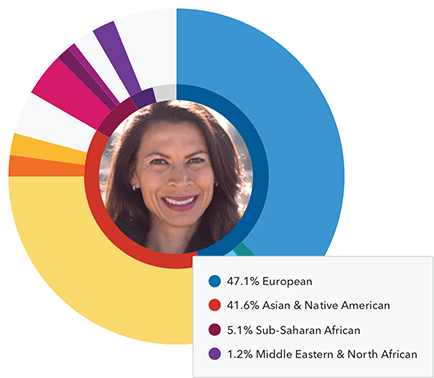

Discover more about your DNA story.
More regions. More connections. More ways to discover what makes you, you.
Limit 3 kits. Offer ends Dec 26.
Experience your ancestry in a
whole new way.
Click to explore our service below.
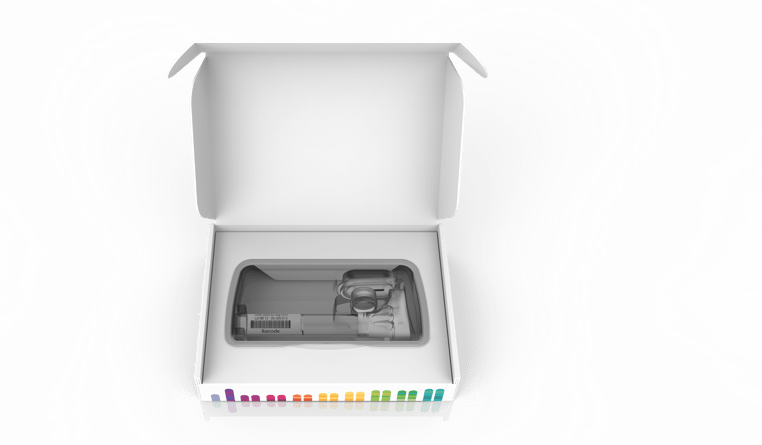
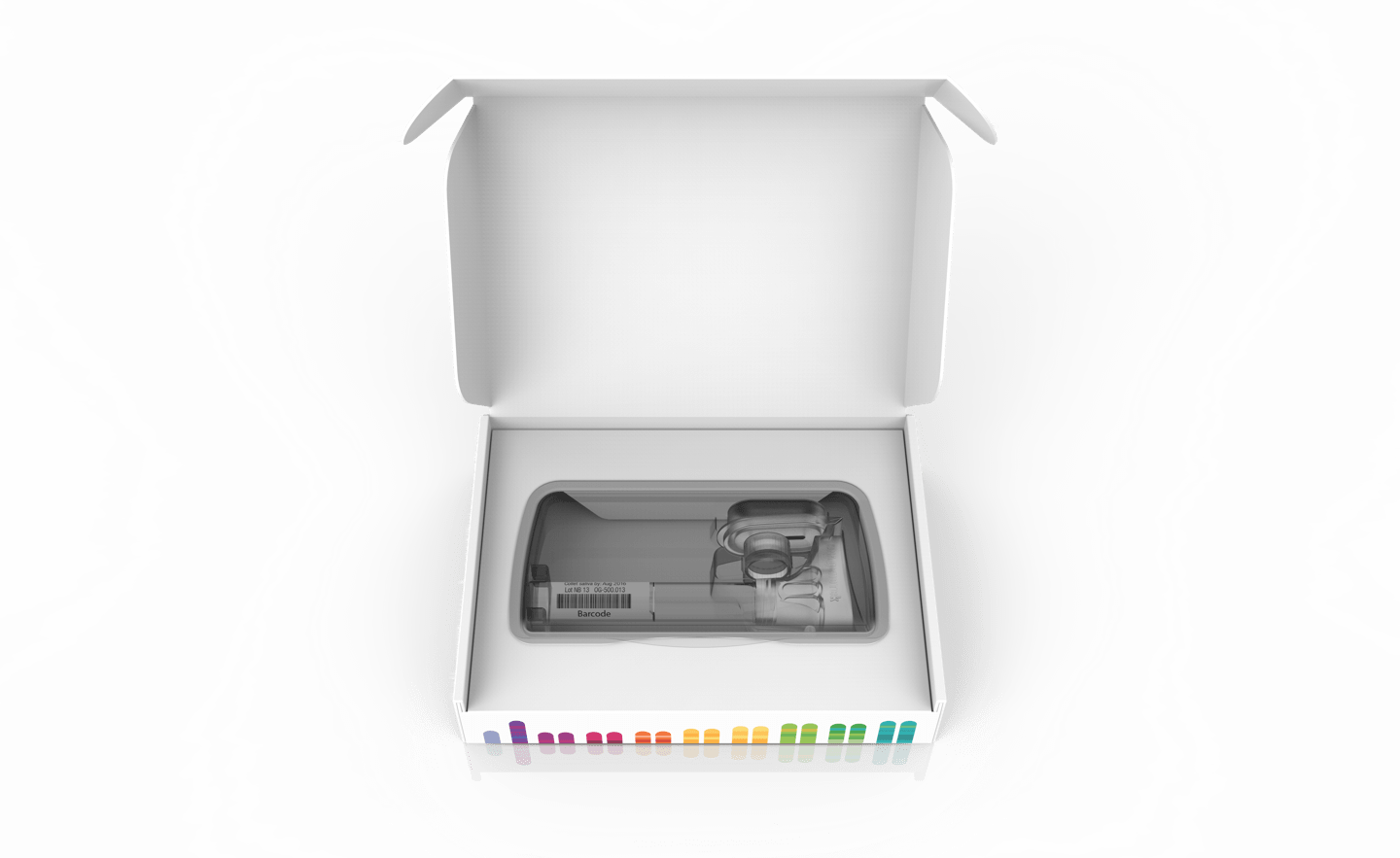
Now with 2000+ regions Ancestry Composition
Discover where your DNA is from out of 2000+ regions worldwide - and more.
Learn more
Family Tree
Our Ancestry + Traits Service now includes our new automatic family tree builder.
DNA Relative Finder
Opt-in to connect with people who share DNA with you - and message them.
Learn more

Trait reports
Learn how your DNA influences your facial features, taste, smell and other traits.
Learn more
Maternal & Paternal Haplogroups
Trace parts of your ancestry to a specific group of individuals from 1,000+ years ago.
Learn more
Neanderthal Ancestry
Discover how much Neanderthal DNA you inherited.
Learn more

Now with 2000+ regions
Ancestry Composition
See how your DNA breaks out across our 2000+ regions worldwide.
- Learn about your ancestral origins.
- See where your ancestors lived 500+ years ago.
- Use your DNA findings to travel to the places that make you, you.
Learn more
Ancestry Composition
- Learn about your ancestral origins.
- See where your ancestors lived 500+ years ago.
- Use your DNA findings to travel to the places that make you, you.
Family Tree
- You don't have to be a genealogist to build your family tree.
- Automatically start your family tree using your DNA.
DNA Relative Finder
Opt-in to connect with people who share DNA with you - and message them.
- Discover DNA relatives from around the world.
- Choose to message and meet relatives - maybe even hear new family stories, share photos and get a better understanding of your family's history.
Learn more

Trait reports
- Our Ancestry + Traits Service includes 30+ trait reports at no additional cost.
- Compare your results to other 23andMe customers.
Learn more
Maternal & Paternal Haplogroups
Trace parts of your ancestry to a specific group of individuals from 1,000+ years ago.
- Understand how the migration of our DNA tells the story of your ancestors.
- Learn the origins of your maternal and paternal* ancestors.
*Women can only trace their paternal haplogroup by connecting to a male relative — such as a father, brother or paternal male cousin.
Learn more
Neanderthal Ancestry
Discover how much Neanderthal DNA you inherited.
- Find out how much of your DNA is derived from Neanderthals.
- See how your Neanderthal composition compares to others.
- Learn which traits your Neanderthal DNA is associated with, like height and back hair.
Learn more
Experience your ancestry in a
whole new way.
Click to explore our service below.
Ancestry Composition
Haplogroups
Neanderthal Ancestry
DNA
Relatives
See how your DNA breaks out across our 2000+ regions worldwide.
- Learn about your ancestral origins
- See where your ancestors lived 500+ years ago
- See how each of your biological parents contributed to your Ancestry Composition (feature available when connected with one genotyped parent).
Learn more
Trace parts of your ancestry to a specific group of individuals from 1,000+ years ago
- Understand how the migration of our DNA tells the story of your ancestors
- Learn the origins of your maternal and paternal* ancestors
- Women can only trace their maternal haplogroup
Learn more
Explore genetic similarities and differences between you and your relatives
- See how different ancestries have traveled through generations of your family.*
- Requires relatives to be genotyped
- Share reports with family and friends (even if they are not customers!)
Discover how much Neanderthal DNA you inherited!
- Find out how much of your DNA is derived from Neanderthals
- See how your Neanderthal composition compares to others
- Learn which traits your Neanderthal DNA is associated with, like height and back hair
Learn more
Opt-in to connect with people who share DNA with you - and message them!
- DNA Relatives carousel copy
- Discover DNA relatives from around the world
- Choose to message and meet relatives - maybe even hear new family stories, share photos and get a better understanding of your family's history
Learn more
76-year-old woman finds
her birth family after
a 40-year search
Play video
Where in the world is your DNA from?
Your DNA can tell you where your ancestors lived more than 500 years ago. Explore your ancestry's breakdown by region, including East Asia, Sub-Saharan Africa and Europe, with results becoming more refined as our database continues to grow.
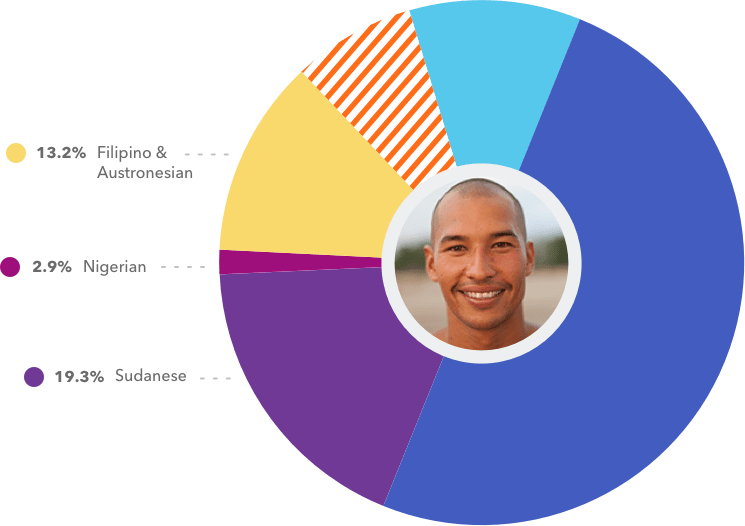

Trait Reports
30+ reports
Find out your likelihood of having certain characteristics. See how your DNA affects your hair color, taste preferences and more. You can also compare your results to other 23andMe customers.
Reports include
- Hair: Color, Curliness, Male Bald Spot
- Taste & Smell: Sweet vs. Salty, Bitter
- Facial Features: Cheek Dimples, Unibrow, Freckles
- See all traits
Take a closer look at a report.
Overview
See how likely you are to have the trait and how your prediction compares to other groups.
About the trait
Learn how the trait develops, how it evolved and other contributing factors.
Take action
Take the next step by sharing, comparing or learning more about your results.
What if you could travel there?
Learn more about how you can embark on a DNA travel adventure based on your 23andMe Ancestry Composition results.
Your Ancestry Timeline
Traced through the generations
Discover when different ancestries were introduced into your DNA. Learn how many generations ago you had an ancestor that was descended from a single population or ethnicity.
A new social network, with a genetic twist.
Explore your DNA Family! We all have our immediate, biological or adopted families...but did you know you could also share DNA with other 23andMe customers - your DNA Relatives?
With this unique (and anonymous) report, see how many DNA Relatives you have around the world - or here in the US! View all the places your DNA Relatives call home.
And if you want to dig deeper, you can opt-into our DNA Relatives tool to find, connect and message those who share DNA with you.
Find DNA relatives across the globe or across the street.
Find other 23andMe customers who share your DNA and ancestors. Explore matches that range from close family to distant relatives and make new connections. Shed new light on your family story by discovering a new relative nearby or somewhere around the world. You can always choose to opt in or out of this tool.
The difference is in our DNA
Some of our most innovative ancestry features that let you drill down into the details:
- Inheritance Tracing: Trace how certain populations were passed down through different generations – which is more interesting if you have family members in the database
- Ancestry percentages to the 0.1%: We provide estimates of your ancestry percentages down to the 0.1%, and we also give you the option to explore results with different confidence levels
- Breakdown of ancestry: See how your DNA breaks out across our 2000+ regions worldwide
- Compare DNA Relatives' segments: In the DNA Relatives tool, see overlapping chromosome segments between you and your matches and compare them with up to 5 other matches at a time to help you triangulate new relatives for your family tree
Map your ancestry.
Go further back.
Discover the origins of your maternal (your mother's mother's mother's…) and paternal (your father's father's father's…) ancestors and how they moved around the world over thousands of years.
We report on your maternal and paternal lineage by identifying your haplogroups. A haplogroup can trace part of your ancestry back to a specific group of individuals in the distant past.
Women can only trace their maternal haplogroup. This is because the paternal haplogroup is traced through the Y chromosome, which women do not inherit.
Information for women 
More on: results for women.
The vast majority of our features, including the Ancestry Composition report and DNA Relatives tool, are based on autosomal DNA. Autosomal DNA is inherited from both parents, and women receive all these reports and tools.
While men can trace both their maternal haplogroup (from mitochondrial DNA) and their paternal haplogroup (through the Y chromosome passed down from their father), women can only trace their maternal haplogroup (through the mitochondrial DNA passed down from their mother). This is because the paternal haplogroup is traced through the Y chromosome, which women do not inherit.
Keep in mind that haplogroups are one small part of your ancestry analysis. If a male relative such as your father, brother, paternal uncle or paternal male cousin were genotyped, your own paternal haplogroup information could be inferred from any of them.

Find out if you're a little bit Neanderthal.
Even though Neanderthals vanished about 40,000 years ago, their DNA lives on in us. Research tells us that they interbred with humans around 60,000 years ago.
23andMe can tell you how much of your DNA is derived from Neanderthals and how that compares to others. We can even point to specific Neanderthal DNA that is associated with traits that you might have – like height and back hair.
Hi. Still have questions about our ancestry features?
Here are just a few of the things people frequently ask about 23andMe.
If you don't see your question here, get in touch with us.
Some ancestry services are records-based, which means that they help you search historical records such as birth, death and marriage certificates, to trace your lineage. 23andMe offers genetics-based ancestry reports and tools, which means that we analyze your DNA to trace your lineage.
With 23andMe, you can look deeper into your personal history to learn what percentage of your DNA comes from populations around the world, find your DNA relatives, learn about your maternal and paternal lineages and even see how much of your DNA comes from Neanderthals.
The 23andMe DNA database has more than five million genotyped customers worldwide. You will continue to find new relatives as our database grows over time.
Many people benefit from finding new family members – from those who fill in details of their family trees to adoptees finding their biological family.
If you opt in to DNA Relatives, you will be able to send and receive invitations to connect with other customers who share DNA with you. You can choose whether to respond to these invitations or not, and your DNA relatives have the same choice. We cannot guarantee that they will respond to your sharing invitations or messages. Regardless of whether you both agree to share, you will be able to see their birthplace, locations of their ancestors and surnames, if they have chosen to add this information to their profile. If you both accept sharing invitations, you will be able to see ancestry reports and overlapping chromosome segments.
In rare cases, participation in DNA Relatives may reveal that you are related to someone unexpected, or that you are not related to someone in the way that you expected. Consider this before you opt in to this feature.
Your ancestry results are based on a few different types of DNA—DNA inherited from both of your parents (chromosomes 1-22), Y chromosome DNA and mitochondrial DNA.
DNA that you inherit from both parents is called autosomal DNA. Since you inherit approximately half of this type of DNA from each parent, it reflects recent ancestry from both sides of your family tree. The vast majority of our features, including our Ancestry Composition report and DNA Relatives tool, are based on autosomal DNA.
Haplogroups are a different story. Your maternal line haplogroup assignment is derived from a separate piece of DNA called the mitochondria. Since mitochondria is passed on only by mothers to their children, your maternal line haplogroup assignment only tells you about your mother's side of the family. Similarly, the paternal line haplogroup assignment is derived from a different, separate piece of DNA called the Y chromosome. The Y chromosome is only passed from fathers to sons and only traces the paternal line.
Haplogroups are mainly used for doing anthropological research of time frames long before the adoption of surnames. Haplogroups are simply pointers to a large geographic area of the world where that haplogroup is found in high frequency.
Some genetic ancestry services only provide autosomal DNA analysis or charge you separately for the maternal and paternal haplogroup information. 23andMe includes all of these for a single price.
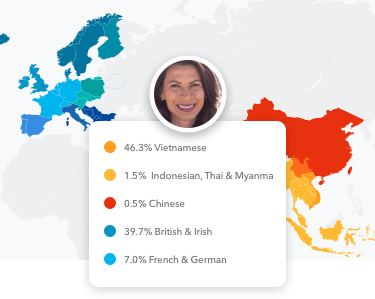
Discover more about
your DNA story.
More regions. More connections. More ways to discover what makes you, you.
Ancestry + Traits Service
Original Price: USD$99 Sale Price: USD$79
Limit 3 kits. Offer ends Dec 26.

Ancestry Composition
Discover where your DNA is from out of 2000+ regions worldwide - and more.
Your DNA can tell you where your ancestors lived more than 500 years ago. Explore your ancestry's breakdown by region, including East Asia, Sub-Saharan African and Europe, with results becoming more refined as our database continues to grow.
What if you could travel there? Learn more about how you can embark on a DNA travel adventure based on your 23andMe Ancestry Composition results.

Trait reports
Learn how your DNA influences your facial features, taste, smell and other traits.
30+ reports
Find out your likelihood of having certain characteristics. See how your DNA affects your hair color, taste preferences and more. You can also compare your results with other 23andMe customers.
Reports included
- Hair: Color, Curliness, Male Bald Spot
- Taste & Smell: Sweet vs. Salty, Bitter
- Facial Features: Cheek Dimples, Unibrow
- sample report
- Ability to Match Musical Pitch
- Asparagus Odor Detection
- Back Hair (available for men only)
- Bald Spot (available for men only)
- Bitter Taste
- Bunions
- Cheek Dimples
- Cilantro Taste Aversion
- Cleft Chin
- Dandruff
- Earlobe Type
- Early Hair Loss (available for men only)
- Earwax Type
- Eye Color
- Fear of Heights
- Fear of Public Speaking
- Finger Length Ratio
- Flat Feet
- Freckles
- Hair Photobleaching (hair lightening from the sun)
- Hair Texture
- Hair Thickness
- Ice Cream Flavor Preference
- Light or Dark Hair
- Misophonia (hatred of the sound of chewing)
- Mosquito Bite Frequency
- Motion Sickness
- Newborn Hair
- Photic Sneeze Reflex
- Red Hair
- Skin Pigmentation
- Stretch Marks
- Sweet vs. Salty
- Toe Length Ratio
- Unibrow
- Wake-Up Time
- Widow's Peak

DNA Relative Finder
Connect with people who share DNA with you.
Find other 23andMe customers who share your DNA and ancestors. Explore matches that range from close family to distant relatives and make new connections. Shed new light on your family story by discovering a new relative nearby or elsewhere around the world. You can always choose to opt in or out of this tool.
Expand content
Maternal & Paternal Haplogroups
Trace parts of your ancestry to a specific group of individuals from 1,000+ years ago
Discover the origins of your maternal (your mother's mother's mother's…) and paternal (your father's father's father's…) ancestors and how they moved around the world over thousands of years.
We report on your maternal and paternal lineage by identifying your haplogroups. A haplogroup can trace part of your ancestry back to a specific group of individuals in the distant past.
Women can only trace their maternal haplogroup. This is because the paternal haplogroup is traced through the Y chromosome, which women do not inherit.
More about results for women
The vast majority of our features, including the Ancestry Composition report and DNA Relatives tool, are based on autosomal DNA. Autosomal DNA is inherited from both parents, and women receive all these reports and tools.
While men can trace both their maternal haplogroup (from mitochondrial DNA) and their paternal haplogroup (through the Y chromosome passed down from their father), women can only trace their maternal haplogroup (through the mitochondrial DNA passed down from their mother). This is because the paternal haplogroup is traced through the Y chromosome, which women do not inherit.
Keep in mind that haplogroups are one small part of your ancestry analysis. If a male relative such as your father, brother, paternal uncle or paternal male cousin were genotyped, your own paternal haplogroup information could be inferred from any of them.

Neanderthal Ancestry
Discover how much Neanderthal DNA you inherited
Even though Neanderthals vanished about 40,000 years ago, their DNA lives on in us. Research tells us that they interbred with humans around 60,000 years ago.
23andMe can tell you how much of your DNA is derived from Neanderthals and how that compares to others. We can even point to specific Neanderthal DNA that is associated with traits that you might have – like height and back hair.
Raw data included 
Raw data is for information purposes only; must not be used for medical or diagnostic purposes.
Test for Dna Nationality Where to Do It
Source: https://www.23andme.com/en-int/dna-ancestry/
0 Response to "Test for Dna Nationality Where to Do It"
Post a Comment